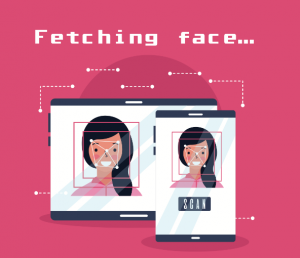Conversing with the Departed: Is AI Grief Tech the Future of Remembrance?
The age-old human desire to connect with loved ones transcends even death. We cling to photographs, letters, and cherished possessions, seeking solace in the echoes of their presence. But what if technology could offer something more? What if we could actually speak to those we’ve lost? This isn’t science fiction, but the rapidly evolving reality of AI-powered grief tech.
This burgeoning field, populated by companies like HereAfter AI, StoryFile, and You, Only Virtual, leverages artificial intelligence to create digital replicas of deceased individuals. Imagine video chatting with a departed parent, hearing their voice offer advice, or simply reminiscing about shared memories. While still in its infancy, grief tech is posing profound questions about how we process loss, remember the departed, and even define the boundaries of life and death in the digital age.
Navigating the Landscape of Digital Afterlives
Grief tech platforms utilize a variety of approaches to build their digital replicas:
Voice Cloning and Life Story Preservation: HereAfter AI focuses on capturing a person’s life story through extensive interviews. These recordings are then used to create a voice-activated AI that can answer questions about the deceased’s life, offering a glimpse into their personality and experiences.
Interactive Video Avatars: StoryFile takes a more visually immersive approach. Users record video responses to a pre-selected set of questions, which are then used to create an interactive video avatar. This avatar can respond to specific prompts, offering a more lifelike representation of the deceased.
Personalized Communication Bots: You, Only Virtual delves deeper into the nuances of individual relationships. By analyzing a vast dataset of text messages, emails, and voice recordings, this platform aims to create a personalized bot that mirrors the unique communication style of the deceased, fostering a more intimate and personalized connection.

The Allure and Ethical Quandaries of Digital Immortality
The potential benefits of grief tech are undeniable. For those struggling with loss, these digital replicas can offer comfort, closure, and a unique avenue for preserving memories. Imagine a future where families can access a digital archive of their loved ones, sharing stories and wisdom across generations.
However, this technology also raises complex ethical concerns:
Consent and Privacy: Creating a digital replica of someone without their explicit consent is a moral minefield. While some argue that permission is less crucial for the deceased, the implications for living individuals are significant. Imagine the potential for misuse – creating unauthorized replicas of ex-partners or using someone’s digital likeness for malicious purposes.
Prolonged Grief and Unrealistic Expectations: While grief tech can offer solace, there’s a risk of prolonging the grieving process or fostering unhealthy attachments to digital representations. It’s crucial to remember that these AI constructs are not sentient beings. They lack the complexity and capacity for genuine interaction that defines human relationships.
Exacerbating the Digital Divide: The financial and technical barriers to entry for grief tech could exacerbate existing inequalities. Access to these services might be limited to those with the resources to create and maintain digital replicas, potentially creating a disparity in how we remember and honor the dead.
The Future of Remembrance: A Conversation We Need to Have
As AI technology advances, the line between reality and digital simulation will continue to blur. Grief tech is just one facet of this evolving landscape, forcing us to grapple with profound questions about identity, memory, and the very nature of death in the digital age.
Here are some crucial considerations as we navigate this uncharted territory:
Establishing Ethical Frameworks: Clear guidelines and regulations are essential to govern the development and deployment of grief tech. This includes addressing issues of consent, data privacy, and the potential for misuse.
Fostering Open Dialogue and Education: Open conversations about the ethical implications of grief tech are crucial. We need to engage in thoughtful discussions about the potential benefits and risks, ensuring that individuals are equipped to make informed decisions about this technology.
Prioritizing Human Connection: While grief tech can offer a valuable tool for remembrance, it’s essential to remember that it cannot replace genuine human connection. We must prioritize meaningful relationships and support networks in life, recognizing that technology can only complement, not replicate, the richness of human interaction.

Resources for Further Exploration:
The Ethics of Grief Tech: An insightful article exploring the ethical considerations surrounding the use of AI to simulate deceased loved ones.
Digital Afterlife and the Right to Digital Identity: A scholarly article examining the legal and ethical dimensions of digital identity after death.
The Conversation: Should We Talk to the Dead?: A thought-provoking piece discussing the potential psychological and societal impacts of communicating with digital representations of the deceased.
As we stand at the cusp of this technological frontier, it’s our responsibility to approach grief tech with both curiosity and caution. By engaging in thoughtful dialogue, establishing ethical guidelines, and prioritizing genuine human connection, we can harness the power of AI to honor the memories of those we’ve lost while navigating the complex ethical landscape of digital remembrance.









